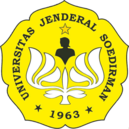English or Indonesian Language? Parents’ Perception Toward Children's Second Language Learning Context
Abstract
The phenomenon of teaching English and Indonesian language, especially in North Sulawesi, as a second language overlaps, where some argue that teaching Indonesian language should come first so that children will not forget Indonesian language or, in other words, children will master their national language. In this study, the method used is a descriptive method with a qualitative approach. The sample used as respondents by the researcher is parents in North Sulawesi who have children who can speak English and Indonesian, in addition, to their mother tongue (Manado language/Regional language), and the respondents consisted of 10 parents. The researcher used questionnaires to gather parents' perceptions of whether the children should be taught English or Indonesian Language first. However, some people think teaching English is very important because mastering English as an international language is necessary. English is suitable for children as their second language, but teaching Indonesian language as the national language is also very important. Therefore teaching between these two languages must be balanced so that it does not only English that can be mastered by children or not only Indonesian language.
References
Akhadiah, S. (1998). Teori Belajar Bahasa . Jakarta: Depdikbud.
Chaer, Abdul. (2003). Psikolinguistik: Kajian Teoretik. Jakarta: Rineka Cipta.
Denizer, E. N. (2017). Does Mother Tongue Interfere in Second Language Learning? Journal of Foreign Language Education and Technology, 2(1): 39-54.
Grosjean, F. (1982). Life with Two Languages: An Introduction to Bilingualism. Harvard University Press.
Gon, S., & Rawekar, A. (2017). Effectivity of e-learning through WhatsApp as a Teaching Learning Tool. MVP Journal of Medical Sciences, 4(1): 19-25.
Iskandar, I. (2019). A Study of Parental Perception Towards the Removal of English from Primary Schools’ Local Content Curriculum. In: The Eleventh Conference on Applied Linguistics (CONAPLIN 2018), 27-28 November 2018, Banana Inn Hotel, Bandung, Indonesia.
Jabbari, N., & Eslami, Z. R. (2019). Second language learning in the context of massively multiplayer online games: A scoping review. ReCALL, 31(1): 92-113.
Kandati, S. P., & Tatipang, D. P. (2021). The Effect of Virtual Teaching on Attitudes of Second Language Acquisition During Covid-19 Conditions of Indonesian Students. Journal of English Culture, Language, Literature and Education, 9(2): 117-127.
Kusumaningputri, R., Ningsih, T. A., & Wisasongko, W. (2018). Second language writing anxiety of Indonesian EFL students. Lingua Cultura, 12(4): 357-362.
Liando, N. (2012). Bilingual and Regular Class Students’attitudes Towards English. LITERA, 11(2).
Lumentut, Y., & Lengkoan, F. (2021). The Relationships of Psycholinguistics In Acquisition And Language Learning. Journal of English Culture, Language, Literature and Education, 9(1): 17-26.
Mawuntu, Y. R., Wowor, D., & Kumayas, T. (2020). An Analysis on Code Mixing Used by Youth in Kiniar. Journal of English Culture, Language, Literature and Education, 8(2): 160-175.
Mitchell, R., Myles, F., & Marsden, E. (2019). Second language learning theories. Routledge.
Mukminin, A., Haryanto, E., Sutarno, S., Sari, S. R., Marzulina, L., Hadiyanto, H., & Habibi, A. (2018). Bilingual education policy and Indonesian students’ learning strategies. İlköğretim Online, 17(3).
Nazir. (2011). Metode penelitian. Jakarta: Ghalia Indonesia.
Nushi, M., & Eqbali, M. H. (2017). Duolingo: A Mobile Application to Assist Second Language Learning. Teaching English with Technology, 17(1): 89-98.
Pujihastuti, I. (2010). Prinsip penulisan kuesioner penelitian. CEFARS: Jurnal Agribisnis dan Pengembangan Wilayah, 2(1): 43-56.
Persson, V., & Nouri, J. (2018). A systematic review of second language learning with mobile technologies. International Journal of Emerging Technologies in Learning, 13(2).
Potter, C. E., Wang, T., & Saffran, J. R. (2017). Second language experience facilitates statistical learning of novel linguistic materials. Journal of Cognitive science, 41: 913-927.
Preston. V. (2009). Questionnaire Survey. Journal of International Encyclopedia of Human Geography.
Saddhono, K., Hasibuan, A., & Bakhtiar, M. I. (2019). Facebook as a learning media in TISOL (Teaching Indonesian to Speakers of Other Languages) learning to support the independency of foreign students in Indonesia. In Journal of Physics: Conference Series (Vol. 1254, No. 1, p. 012061). IOP Publishing.
Sidupa, C. (2018). Indonesian Language Transfer of Students of English as a Second Language (ESL). KnE Social Sciences, 51-57.
Sinnema, C., Nieveen, N., & Priestley, M. (2020). Successful futures, successful curriculum: What can Wales learn from international curriculum reforms?. The Curriculum Journal, 31(2): 181-201.
Sugiyono. 2004. Metode Penelitian Bisnis. Bandung: Alfabeta.
Tatipang, D., Oroh, E. Z., & Liando, N. V. (2021). The Application of Mind Mapping Technique to Increase Students’reading Comprehension at The Seventh Grade Of SMP. KOMPETENSI: Jurnal Bahasa dan Seni, 1(03): 389-397.
Authors who publish with Jurnal Ilmiah Lingua Idea agree to the following terms:
- Authors retain copyright and grant the journal right of first publication with the work simultaneously licensed under a Creative Commons Attribution License (CC BY-SA 4.0) that allows others to share the work with an acknowledgment of the work's authorship and initial publication in this journal.
- Authors are able to enter into separate, additional contractual arrangements for the non-exclusive distribution of the journal's published version of the work (e.g., post it to an institutional repository or publish it in a book), with an acknowledgment of its initial publication in this journal.
- Authors are permitted and encouraged to post their work online (e.g., in institutional repositories or on their website) prior to and during the submission process, as it can lead to productive exchanges, as well as earlier and greater citation of published work.





















.png)




_.png)


